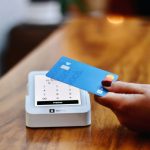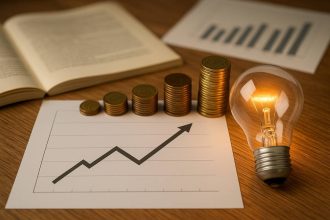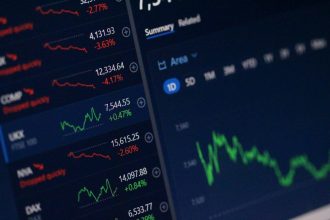Life rarely goes according to plan. A normal week can turn upside down with a single unexpected expense. One day the car engine refuses to start, the next you are faced with a medical procedure you did not anticipate, or a sudden layoff leaves you without a paycheck. For households that live paycheck to paycheck, these moments are not just stressful, they can trigger a chain reaction of debt that takes months or even years to recover from. The bill arrives, the money is not there, and the only option is often a credit card or a loan. What feels like a quick fix quickly becomes a financial weight that lingers long after the emergency itself is resolved.
An emergency fund is the quiet antidote to this cycle. It does not stop life from throwing challenges at you, but it changes the way you respond. With a cushion in place, the same crisis that would have left you scrambling becomes manageable. You do not panic, you do not go into debt, you simply handle the expense and move on. It is more than a pile of cash; it is a form of protection, a shield that guards your stability and brings peace of mind even in uncertain times.
The idea of saving ten thousand dollars can feel overwhelming at first glance. Most people imagine sacrifice, drastic cutbacks, or unrealistic money challenges. In truth, reaching this milestone is not about deprivation or gimmicks. It is about consistency, structure, and a plan that turns small, steady actions into lasting results. Regardless of whether you earn a modest salary or enjoy a larger income, the path to a five-figure emergency fund is within reach when you build it step by step.
The importance of an emergency fund becomes clear when you compare how two people handle the same problem. Imagine both face a $2,500 car repair. The first has savings. They pay the bill, adjust their budget slightly, and continue forward without disruption. The second does not have savings. They reach for a credit card at twenty percent interest, and what began as a $2,500 repair becomes a debt trap with extra costs, stress, and late-night worries. Emergencies are not optional. They will come. The only thing you can control is how prepared you are to meet them. With cash, you stay in control. Without it, even minor setbacks have the power to derail your progress.
Beyond the dollars, the benefits of an emergency fund are psychological. Constant “what if” questions create anxiety. What if I lose my job? What if the roof leaks? What if my child gets sick? Living with that uncertainty eats away at your confidence. With savings in place, those same questions no longer feel paralyzing. You know you can handle them. That kind of peace of mind is difficult to put a price on.
One of the first challenges is deciding how much to save. The common advice is three to six months of essential expenses. Essentials are the non-negotiables: housing, utilities, groceries, transportation, insurance, and debt obligations. Wants and luxuries do not belong in this calculation. If your essentials total $2,500 each month, then your full goal is between $7,500 and $15,000. For someone with higher costs, the number rises, but the principle remains the same. At first the target may feel out of reach, which is why it helps to break it down into milestones. The first thousand dollars is the foundation, enough to cover a small medical bill or urgent repair. After that, aim for one month of expenses, then three, and eventually the full cushion. By setting smaller goals along the way, the process becomes achievable instead of overwhelming.
Circumstances affect the right target for you. A salaried worker with a stable job may feel secure with a smaller fund, while a freelancer with variable income or a parent with children may prefer the safety of a larger one. The goal is not to chase a perfect number but to choose an amount that makes you feel both motivated and protected.
The next decision is where to keep the money. An emergency fund is not an investment, it is insurance. That means the money needs to be safe and accessible. The best home is a high-yield savings account, separate from your main checking. It will earn modest interest, remain available within a day or two, and create a small barrier that discourages casual spending. Investing the money in stocks or crypto introduces risk, and risk has no place in money you may need at a moment’s notice. The purpose of this account is not growth but stability.
The hardest part is getting started. Saving feels impossible when you are at zero, but momentum builds faster than you might think. Automating contributions is the simplest way to begin. Even fifty or a hundred dollars moved automatically into savings every payday makes progress visible. Once it is automated, it happens without thought, like paying a bill to yourself. Alongside automation, make a temporary cut to one indulgence. Fewer takeout meals, a subscription you hardly use, or skipping impulse shopping for a month can free money you would not have noticed otherwise. Pair this with a decluttering session: sell old electronics, unused furniture, or clothing online. Those one-time boosts can add hundreds of dollars in the first few weeks. By the end of three months, most people are surprised to find they have saved between $1,500 and $2,000. The fund begins to feel real.
After the first stage, the strategy shifts from jump-starting to sustaining. This is where the 50-30-20 framework proves valuable. Half of your income goes to needs, thirty percent to wants, and twenty percent to savings and debt payoff. Within that savings portion, the emergency fund takes priority until it is fully built. Another trick is to treat raises and bonuses as invisible. If you receive a raise of $200, send half of it directly into savings before new spending habits creep in. This way your lifestyle still improves slightly, but your fund grows faster.
Look for one-time financial wins that permanently free up cash. Negotiate your internet or phone bill, refinance a loan, or shop around for cheaper insurance. Every reduction is an opportunity to redirect savings automatically. This way, your emergency fund grows quietly in the background without constant effort.
Seasonal or annual costs are another area that can drain progress. Car registration, holiday shopping, or back-to-school expenses feel like emergencies if you do not prepare for them. The solution is to divide these yearly expenses into monthly contributions and save them in a separate account. When the bill comes, the money is ready, and your emergency fund remains untouched.
Reaching $10,000 will not happen overnight, but the math is encouraging. On an income of $2,500 a month, saving $300 plus occasional side income gets you there in just over two years. At $4,000 a month, setting aside $500 and adding part of a tax refund or bonus gets you there in about eighteen months. On $6,000 a month, $800 saved monthly plus windfalls means you can hit the milestone in a year. The principle is always the same: steady contributions, consistent habits, and occasional boosts.
At some point, you will need to use the fund, and that is not failure. That is the purpose. The important thing is to refill it. If you withdraw $1,200 for a car repair, adjust your transfers slightly until the balance is restored. This habit of replenishment keeps the system strong. Defining what counts as an emergency is also essential. True emergencies are job loss, medical bills, urgent repairs, or family crises. Vacations, sales, or the latest gadget do not qualify. Protecting the boundary is what ensures the fund is always ready for what matters most.
The psychological step is the final one. When you finally reach five figures, resist the temptation to see it as extra spending money. It is not. It is your shield. It waits quietly until the day you need it, and in the meantime it brings a sense of calm every time you check your bank balance. You do not hope for emergencies, but you are prepared for them, and that knowledge alone changes the way you live.
An emergency fund is not about building wealth. It is about building security. It will not make you rich, but it will keep you safe, and safety is the foundation on which all future success rests. By automating transfers, capturing windfalls, and maintaining strong habits, you can grow from zero to $10,000 without feeling deprived. The journey may take time, but the moment you begin, the benefits start to appear. That first hundred dollars feels like breathing room. The first thousand feels like freedom. By the time you reach ten thousand, you have not only created a financial cushion but also built confidence that no surprise can shake.
Do not wait for a perfect time to start. The perfect time is today. Every small contribution is progress, and every step makes you stronger.
Featured Image Source: Getty Images / Unsplash+









